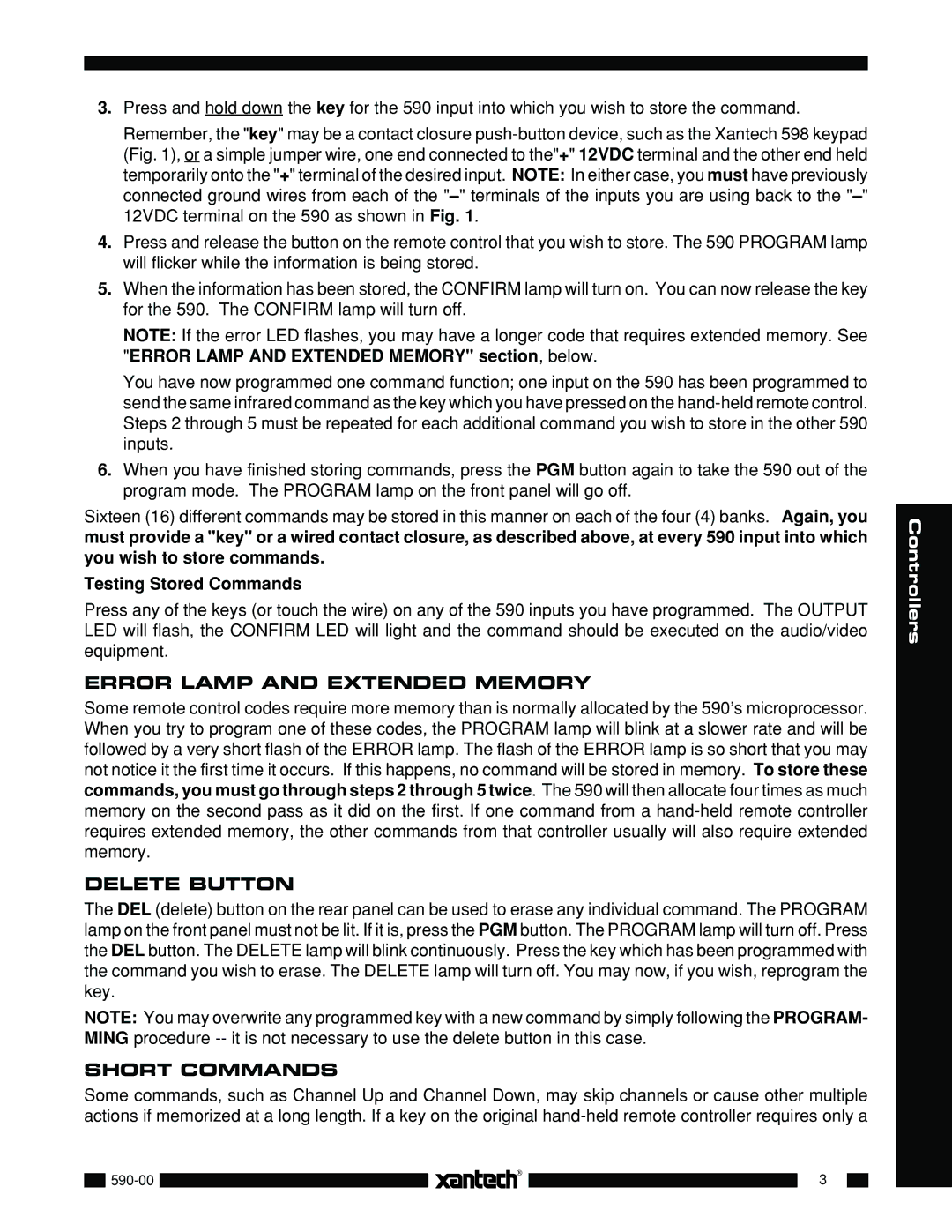
3.Press and hold down the key for the 590 input into which you wish to store the command.
Remember, the "key" may be a contact closure
4.Press and release the button on the remote control that you wish to store. The 590 PROGRAM lamp will flicker while the information is being stored.
5.When the information has been stored, the CONFIRM lamp will turn on. You can now release the key for the 590. The CONFIRM lamp will turn off.
NOTE: If the error LED flashes, you may have a longer code that requires extended memory. See "ERROR LAMP AND EXTENDED MEMORY" section, below.
You have now programmed one command function; one input on the 590 has been programmed to send the same infrared command as the key which you have pressed on the
6.When you have finished storing commands, press the PGM button again to take the 590 out of the program mode. The PROGRAM lamp on the front panel will go off.
Sixteen (16) different commands may be stored in this manner on each of the four (4) banks. Again, you must provide a "key" or a wired contact closure, as described above, at every 590 input into which you wish to store commands.
Testing Stored Commands
Press any of the keys (or touch the wire) on any of the 590 inputs you have programmed. The OUTPUT LED will flash, the CONFIRM LED will light and the command should be executed on the audio/video equipment.
ERROR LAMP AND EXTENDED MEMORY
Some remote control codes require more memory than is normally allocated by the 590’s microprocessor. When you try to program one of these codes, the PROGRAM lamp will blink at a slower rate and will be followed by a very short flash of the ERROR lamp. The flash of the ERROR lamp is so short that you may not notice it the first time it occurs. If this happens, no command will be stored in memory. To store these commands, you must go through steps 2 through 5 twice. The 590 will then allocate four times as much memory on the second pass as it did on the first. If one command from a
DELETE BUTTON
The DEL (delete) button on the rear panel can be used to erase any individual command. The PROGRAM lamp on the front panel must not be lit. If it is, press the PGM button. The PROGRAM lamp will turn off. Press the DEL button. The DELETE lamp will blink continuously. Press the key which has been programmed with the command you wish to erase. The DELETE lamp will turn off. You may now, if you wish, reprogram the key.
NOTE: You may overwrite any programmed key with a new command by simply following the PROGRAM- MING procedure
SHORT COMMANDS
Some commands, such as Channel Up and Channel Down, may skip channels or cause other multiple actions if memorized at a long length. If a key on the original
|
|
| |
|
|
|
|
|
|
| 3 |
| |
|
|
|
| |||
|
|
|
|
|
|
|
|
|
|
|
|
|
|
Controllers
